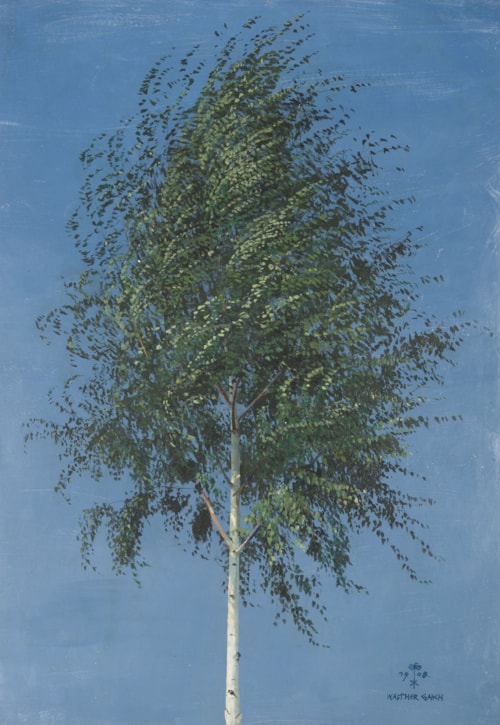
Walther GASCH
Leipzig 1886 - Nentershausen-Dens 1962
Biography
A German painter, draughtsman and printmaker, Walther Gasch was enrolled at the Akademie der bildenden Künste in Dresden from 1905 onwards, studying under Emanuel Hegenbarth and Oskar Zwintscher, and later with Richard Müller. He undertook study trips to France, Italy and Holland, and in the early part of his career painted mainly still life subjects, landscapes and portraits, as well as studies of animals and birds. After serving in the army during the First World War, Gasch was active in the Saxony artist’s aid association, seeking financial assistance for artists returning from the front. He was particularly vocal about the economic rights and viability of the artistic community, and served as the spokesman for the Provisional Revolutionary Council of Artists, one of two competing artist’s organizations in Dresden. Gasch’s group was more radical than its rival, which was known simply as the Council of Artists and included such Expressionist painters as Conrad Felixmüller and Oskar Kokoschka. Although the two groups eventually merged, none of Gasch’s demands – including a takeover of the academy, reform of exhibition policies, control of state funds for art and a guaranteed minimum income for all artists – were ever taken up.
Gasch joined the Deutscher Künstlerverband Dresden, the Dresden artist’s association founded in 1927, and from 1929 taught printmaking at the Hochschule für Graphik und Buchkunst in Leipzig. With the rise of the NSDAP, the National Socialists, Gasch became a fervent member of the party. He soon became a prominent figure in Nazi artistic circles in Dresden, while the Deutscher Künstlerverband gained considerable influence. From 1933 Gasch served as the chief of the Saxony branch of the fine arts commission of the NSDAP, and was one of the main enablers of the restrictive cultural policies imposed by the Nazis in Dresden. (In March and April 1933 he helped to oversee the confiscation of twenty-eight paintings by artists regarded as ‘degenerate’ by the Nazis - including Max Beckmann, Marc Chagall, Lyonel Feininger, Felixmüller, Erich Heckel, Alexej von Jawlensky, Wassily Kandinsky, Ernst Ludwig Kirchner, Paul Klee, Kokoschka, Franz Marc, Edvard Munch, Emil Nolde and Karl Schmidt-Rottluff - from the collection of the Galerie Neue Meister in Dresden.) Like many other German artists, musician and writers, Gasch flourished under the Nazi regime. A member of the Reich Association of Fine Artists, he denounced anti-fascist artists, professors and museum curators, and was closely involved with the Große Deutsche Kunstausstellung, the large Nazi propagandic exhibition of German art held at the Haus der Deutschen Kunst in Munich in 1939.


